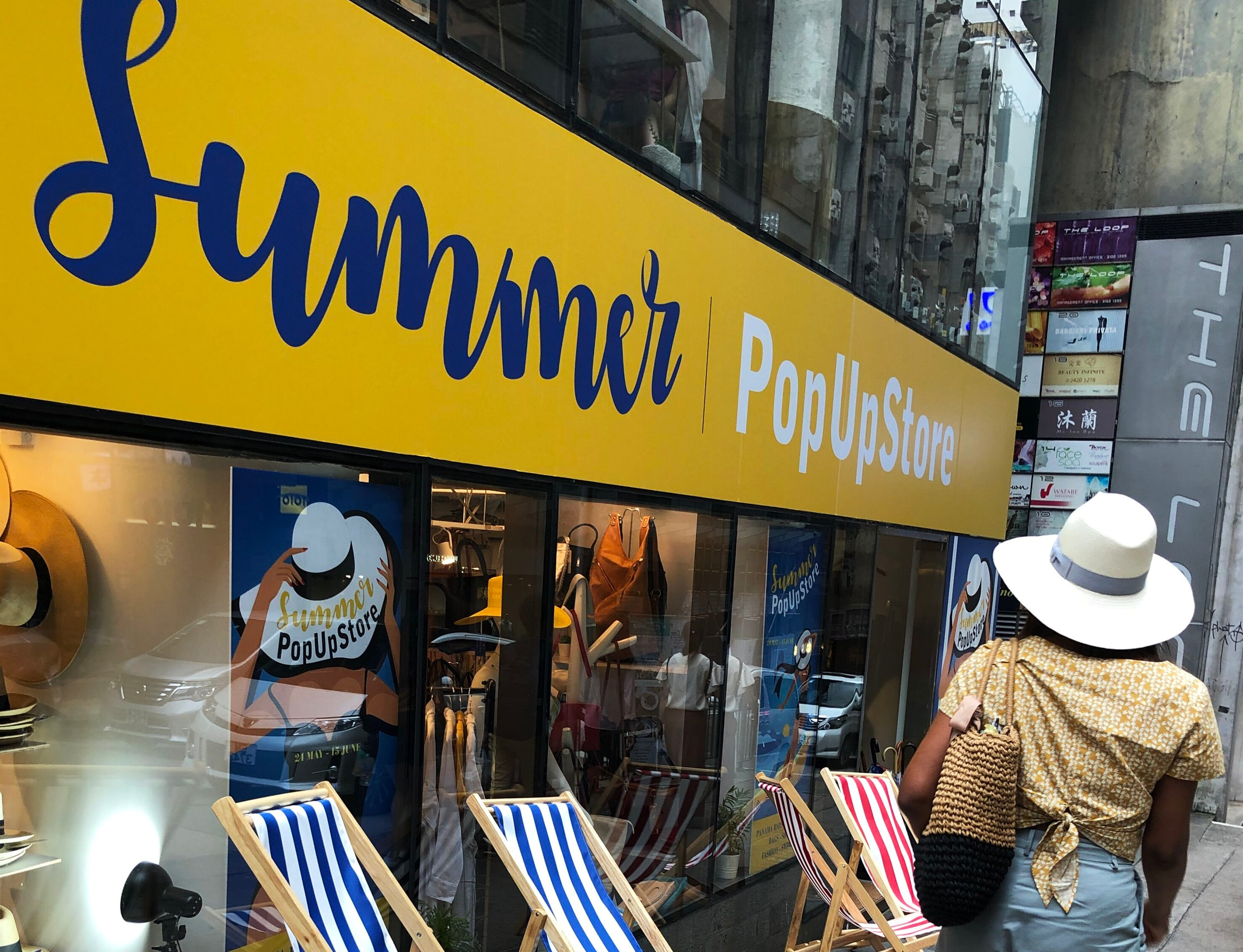Article 10 Jun 2022
How to create the ultimate customer experience in retail stores 2022
Everyone talks about customer experiences, but very few define what such an experience is for stores and malls. A customer experience (CX) is about more than the actual purchase in the store and more than revisiting visitors in malls. It includes everything that the customer feels and can see and experience in connection with the store, mall, and brand. It includes all experiences and all touchpoints before, during, and after the actual conversion.
The customer journey is normally long and hopefully never completed. It continues after the purchase and is renewed for each new purchase. A good customer journey is circular and constantly ongoing. To be able to create a good customer experience requires a good customer understanding, and established CX strategy, a good design, measurement, good management, and a customer-promoting culture.
Building a CX strategy is complex and the purpose is not just to optimize customer experiences, but also to increase customer loyalty and the recruitment of brand ambassadors to attract new and even more customers. Good strategies are always simple, they analyze the situation, simplify reality, and point out the challenges.
With all this in place, a store's and mall’s ability to deliver an improved customer experience will contribute to more conversions and improved customer loyalty. The locations that succeed in delivering good customer experiences can achieve authenticity. This is the absolute highest stage of maturity, where products and services directly reflect the soul of the locations and the brand. This creates a long-term symbiosis with customers' sustainable wishes and interests.
Six easy steps for an ultimate customer experience:
- Define your customers correctly
- Create attractive locations
- Customize your organization
- Understand the values that drive your business
- Use all channels efficiently
- Focus on Customer Lifetime Value (CLV).
“Customers are less satisfied than you think. 80% of companies believe they offer a good customer experience - only 8% of customers agree."
1. Define your customers correctly
What is a customer, what is a good customer, and how do we get a more insightful view of our customers? There is a clear paradox in all commerce and not least in retail, where most of us certainly agree that customers' experiences are important, while we live with an outdated image and definition of what a good customer is - and thus how to create a good customer experience.
A good customer is still usually valued in profitability while the customer has a completely different perspective. When these two images collide, problems arise. This is also an important reason why so many stores and companies continue to have disloyal customers despite the fact that they make large investments in customer experiences.
Here are five important tips for a better and long-term more sustainable definition of your customers:
- Not all good customers are profitable. Anyone who chooses to only measure the customer based on their conversions will never be able to realize the full potential that comes with a more consumer-oriented approach. It is easy to miss the future potential of customers and the impact that customers have on other customers, no matter how much the customer actually converts.
- Understand the consumer in all channels. Being truly consumer-oriented is the same as meeting customers' needs across all channels and basing all decisions on a deep understanding of the consumer. A completely satisfied customer contributes 2.6 times as much revenue as a somewhat satisfied customer and 14 times as much revenue as a somewhat dissatisfied customer. It is basically about making customers happy. The number of new channels is expanding and increasing, at the same time as customers have different preferences now and over time. Therefore, it is important to continuously evaluate and be able to quickly try different concepts and then choose to keep or reject and create new experiences. The foundation for this level of understanding is the 9 key insights all stores and malls should look at daily.
-
Get to know and understand your customers in-depth.
It is important to get to know and understand their customers and their needs in-depth through feedback, surveys, interviews, and measurements for further analysis and action. All customer journeys are individual, at the same time as today's customers are becoming increasingly well-read, competent, and demanding. Once you learn to understand your customers, you as a retailer get completely new opportunities to run your business. - Make customers the brand's ambassadors.
All customers are important for the brand. Brand loyalty makes customers ambassadors, something that often creates long-term relationships. - Create new definitions of your customers.
This can give retailers a broader and deeper picture of all their customers in all channels, making it easier to understand the customer's value. The final step may be to use all these new valuable parameters from all channels to create completely new definitions
“A completely satisfied customer contributes 2.6 times as much revenue as a somewhat satisfied customer and 14 times more than a somewhat dissatisfied customer.”
2. Create attractive locations
The store is a very central touchpoint for the overall customer experience, as this is where most human interactions take place. The location is focused on the actual sales process from the store entrance to the point that a customer decides to convert. That is why it is important to make a coherent and well-thought-out design of the ENTIRE customer experience in the store, which includes the brand as well as the store environment and staff.
A great design will create a positive customer experience and increase your customers’ revisitation frequency. The design of the customer experience includes the brand and its aesthetic and ethical appearance, but also the customer service as well as, of course, the design of the store environment itself.
- Create expectations with the brand. Today's consumers are well informed and are happy to look for experiences that can fulfill their intentions. A brand that can realize this gets a competitive advantage over its competitors. The brand creates expectations linked to the store, the products, and the services. The relationship with the brand is a lifelong relationship, where, however, one must always assume that customers are constantly unfaithful with repeated divorces and new relationships as a result.
- Design store environments according to customers' needs. The store's appearance and design play a crucial role both online and offline, both as a showroom and as a conversion room. Therefore, it is important to design environments that meet customer needs. Furnishings, floors, decoration, design, new technology, lights, and music can influence the consumer's decision to stay longer in the store and/or return, which also increases the chance of a conversion. However, all technology is for the customer - to support and help during such an important customer journey.
- Let the staff be an asset instead of a problem. Over 90 percent of store visitors believe that how they are treated is very important. The main frustrations are long waiting times, employees who do not understand the customer's needs, questions that go unanswered, too little human contact, poorly adapted experiences for the target group, and unpleasant staff. When a customer visit a store in today's digital world, they are primarily looking for new products or experiences with the product. It will then be crucial to train the staff and equip them with the best possible tools to handle the new omnichannel customers.
- Ensure you have adaptable environments.
The location must be easy to keep updated and to adapt. New trends and behavioral changes will continue to happen. That’s why it is important to measure the locations and continue to refine the concepts. Perfection is a never-ending activity.
"Over 90 percent of store visitors believe that how they are treated is very important."
3. Customize your organization
When retail is where their customers are and in real-time offers, positive and consistent support both online and offline, then they get more satisfied customers and can more easily achieve the best multi-channel customer experience.
A good customer experience is always strengthened by a customer being seen and personally addressed. This cultivates customer loyalty and wins customer trust. This is also how we win new brand ambassadors. This applies both online and in the store. This is also why loyalty schemes and deduction coupons have yielded such successful results.
This is how important customer loyalty is strengthened:
- Appreciate your customers.
Never miss the chance to make customers feel special. Surprise them by showing in different creative ways that you value them. The solution to achieve this is actually to understand your customers. - Invest in the staff.
Important for a good customer service experience is real-time commitment. Train staff and give them delegated responsibility so that they can quickly take immediate action to resolve the issues. Train staff to increase customer awareness. Ensure that customer training is an integral part of the corporate culture. Train the staff to be polite and accommodating, use positive language, be actively listening, empathetic, and make customers feel that they are highly valued. - Make sure everyone is involved in the CX work.
Create an internal culture with a staff that is obsessed with its customers. Make sure everyone is actively involved in improving customer experiences, instead of just being a cog in a team. - Focus on internal CX ambassadors.
Engage and inspire internal CX ambassadors, who take the work to a higher level. Remember that commitment spreads as easily as the rings on the water. - Involve the decision-makers.
Make sure that the managers do not end up too far away from the store, but actively participate in the work and thereby see and understand the customers. Learn from other stores within your own chain, from competitors, from premises with similar conditions, but also from other parts of the world. This is best done through physical contacts and quantitative measurements of store performance. - Invest in proactive customer maintenance.
Make sure all customer maintenance is proactive instead of reactive. By constantly improving and optimizing the customer experience, customer loyalty is strengthened. Recurring customers spend almost twice as much time and money as new customers.
“Recurring customers spend almost twice as much time and money as a new customer.”
4. Understand the values that drive your business
The number of touchpoints a customer has with a store or a brand can often be almost innumerable. This includes everything from the first visit to the website to the final product selection in the store. The more positive interactions the customer has with a brand via various touchpoints, the more positive the customer's overall customer experience will be.
Also included are the many hidden difficult-to-measure touchpoints, which indirectly or directly affect the customer via social networks, influencers, friends and acquaintances, advertising and advertisements as well as editorial media channels online and offline. All this of course affects the entire customer journey.
Each individual touchpoint can in itself either help or overturn a final conversion, ie either encourage or discourage a consumer from approaching the store and buying the planned product. Therefore, it is important to understand your customers, their decisions, and their values.
Orienting oneself in a world without knowledge is like swimming in a sea without sight or orientation. Knowledge is obtained through empirical studies and analysis of reality. To listen to and analyze customers helps to understand their needs and concerns, in order that the services really can be adapted to customers' expectations.
- Measure customer experiences.
It is of utmost importance to continuously measure both good and bad customer experiences. Surveys show that 50 percent of customers can switch to a competitor after a bad experience. Customers with bad experiences also tell their friends about these, which can be devastating for the brand. - Collect feedback.
Preferably create several channels to collect customer feedback. Make it a practice to conduct regular surveys (online or offline) to gather feedback. These can be targeted customer surveys, targeted studies, observational studies, or in-depth interviews. Other important sources are of course various customer data, customer insights, and other automated effective methods. - Always AB test in a store environment.
The stores need to try new changes in a structured and experimental way via so-called AB tests. There is an imminent risk that wrong conclusions will be drawn if the change in the sales result is not simultaneously compared with a corresponding randomly selected control group. A truly digital mature company conducts three structuring learning experiments per employee and year. How many do you implement? This is how you get started! - Analyze, adjust and optimize.
By testing and analyzing the data that different measurements generate, you will be able to build data and insights to continuously adjust and optimize the business for increased sales and profitability. The data from the experiments will then be one of your main assets.
“Orienting oneself in a world without knowledge is like swimming in a sea without sight or orientation.”
5. Use all channels efficiently
Digitalization has spoiled consumers in terms of convenience, efficiency, and agility. It no longer matters whether they buy online or offline - customers everywhere assume that the offer is the same. Today, consumers expect to be able to buy via computer, phone, or in the store and choose delivery at home, in the store, in a pre-booked place, or in the trunk of their car. A reseller alt. retailer who cannot offer all these channels loses 10-30% of sales.
But there are still differences. E-commerce will never be able to offer physical experiences in the form of touch, taste, aroma, feeling, and immediate delivery. Even in our new digital world, the physical store is still the most important touchpoint for interaction and it is also the hub, ie the place where all the different channels of commerce are connected.
But even physical retail needs to adapt to the new world. Today's customers demand a brand-filled environment with special, personal experiences, which they cannot get in the digital channels. The transformation of our stores from transactional to multifunctional marketplaces is indeed fast, but it has only just begun.
Here are some tips for a successful transition to becoming a successful Omnichannel.
- Choose the right format for your store.
Today's stores are increasingly transformed into physical warehouses, as well as into intimate spaces for experiences, communication, and interaction. The retail space is decreased and new formats are constantly being developed in the form of flagship stores, pop-up stores, display stores, concept stores, and advisory stores. Their main purpose is to help the customer in the best possible way and at the same time facilitate value between visitors and brands. This also applies to malls. - Make the store an integral part of the entire supply chain.
Today's biggest challenge is to ensure that the store becomes an integral part of the entire supply chain. It is well known that about 80 percent of all consumers who return an item to a store spend the refund in that particular store. At the same time, we know that an omnichannel consumer spends ten times more than a consumer who is only digital. - Create an omnichannel strategy.
With a well-crafted omnichannel strategy, loyalty also increases. Brands with a strong omnichannel strategy retain 89% of their customers, compared to only 33% for brands with a weak omnichannel presence. 73% of today's customers shop over several channels and 85% of digital consumers start the customer journey in one channel and end it in another. - Prepare for increased complexity.
The shift to Omnichannel Retail increases complexity. When customers expect to always have access to the right products in the right places in real-time, very well-thought-out end-to-end planning is required. Forecasts must be made according to markets, products, and channels and they must take into account so-called cannibalization, where for example distinct e-commerce customers stop buying goods in stores or vice versa. - Create an integrated omnichannel organization.
A pronounced omnichannel strategy requires a comprehensive transformation, which includes all the functions of the store chains - marketing, stores, sales, supply chains, and IT, both online and offline. Those who in a near future have not created an integrated omnichannel organization will have a tough time. - Focus on Omnichannel Marketing.
Omnichannel Marketing is primarily about using all relevant channels for cohesive marketing. This is about putting the customer in the center and ensuring that they get an equally good experience regardless of which channel is chosen. According to a study from IDC, loyalty for customers who can shop across several channels increases by more than 30 percent. Comprehensive automated marketing across all channels, and the understanding of ROI, will therefore be very important. - All in all in a single platform.
Market automation tools enable retail to automate the customer experience in several parallel channels. These are usually brought together in a common platform with the help of which it is then possible to create a common customer and marketing strategy for all channels at the same time. - Integrate online and offline commerce marketing.
Online marketing via SEO (Search Engine Optimization), SEM (Search Engine Marketing), and social media are also important for physical retail, as an increased online presence can usually be turned into more foot traffic. How well it works is something that needs to be measured and understood. If you advertise a particular product or brand to a specific audience for a specific geographic area: Does the target group visit the store, do they visit the area where the product is located, and do they shop and come back? These are questions that must first be answered before any investment in digital marketing.
"Brands with a strong omnichannel strategy retain 89% of their customers, compared to 33% for brands with a weak omnichannel presence."
6. Focus on Customer Lifetime Value (CLTV)
A customer who does not generate any large revenue can still be a far better customer than many big buyers. Therefore, it is important to in more detail study the customers' Customer Lifetime Value (CTLV) instead of staring blindly at what is called Customer Profitability. Customer Lifetime Value gives you an estimate of the net profitability of your entire future relationship with your customer and does not just look at actual profitability.
It is about how much your customers themselves or by stimulating others will affect your future business. CLTV is based on your own estimate of the customer's future value. Not about stopping caring about customers with a low CLTV.
Today more than ever, all customers have the opportunity to negatively or positively influence many more people on their personal networks. CLTV is more about trying to be more efficient with limited resources.
Three important factors to consider when calculating Customer Lifetime Value is:
- Loyal customers are good customers.
It costs on average five times as much to acquire a new customer as to try to retain an old one. Existing customers usually become more profitable over time and they function as ambassadors for your brand. - Communicative customers are good customers.
This is because they can act as your best marketer. Your task will be to continue to keep them happy and support them in their positive communication work. - Transparent customers are good customers.
This is because they will talk about what works and does not work in their experiences of the store and the store's brands. It helps you keep more customers happy.
“It costs on average five times more to acquire a new customer than to retain an old one.”





